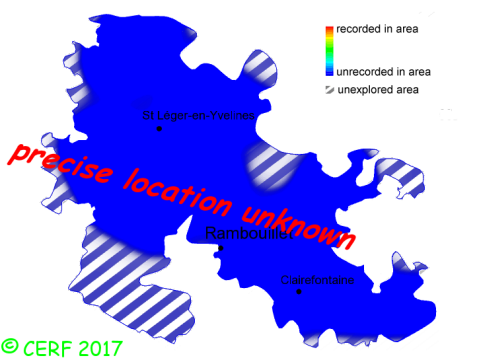|
Entoloma clypeatum (L.) P. Kumm.
|
common name(s) : Shield Pinkgill, Shield-shaped Entoloma
New classification: Basidiomycota/Agaricomycotina/Agaricomycetes/Agaricomycetidae/Agaricales/Entolomataceae
Former classification: Basidiomycota/Homobasidiomycetes/Agaricomycetideae/Pluteales/Entolomataceae
synonyms: Rhodophyllus clypeatus
(unconfirmed synonyms: Agaricus clypeatus)
edibility : edible
|
|
|
The cap is dark or pale grey-brown to whitish, with a central umbo.
The cap surface is smooth, viscid in wet weather.
The stem is white or partly brownish, without ring.
The flesh is white, unchanging; its taste is mealy; the odour is mealy;
its texture is fibrous.
The gills are white then pink to reddish, adnate to emarginate, distant .
The spore print is pink. This species is saprophytic.
It grows on the ground, with elm, blackthorn, and members of the Rosacea family (rose, hawthorn, sloe, etc.).
The fruiting period takes place from March to July.
| Dimensions: | width of cap approximately 8 cm (between 2 and 12 cm) |
| | height of stem approximately 8 cm (between 3 and 15 cm) |
| | thickness of stem (at largest section) approximately 13 mm (between 4 and 25 mm) |
Chemical tests : flesh without reaction to gaiac.
Distinctive features : dark brown to grey-brown cap, hygrophanous; viscous when wet, with a broad umbo and an often cracked centre; wavy margin; odour of meal; grey then pink gills; in spring associated to members of the rosacea family (hawthorn, rose, cherry, plum trees…)
Entoloma clypeatum is rare and confined in the forest of Rambouillet, and is occasional, more generally speaking
.
|  | | Above : distribution map of Entoloma clypeatum in the forest of Rambouillet |
|
page updated on 14/01/18